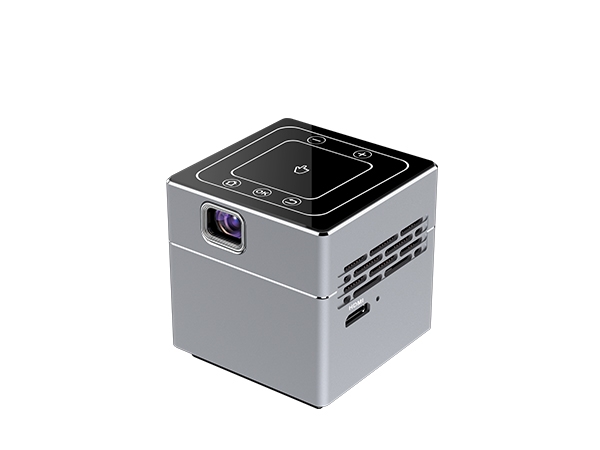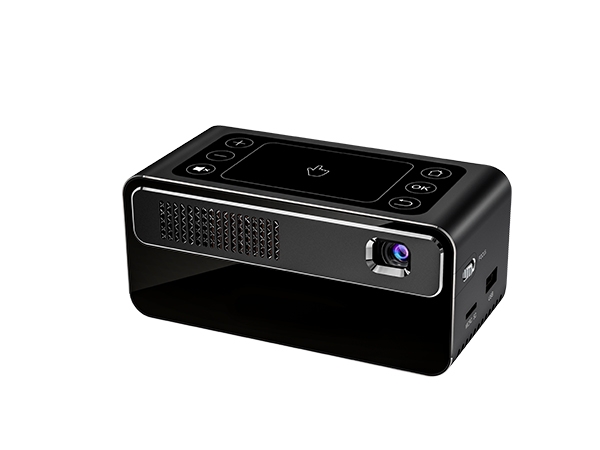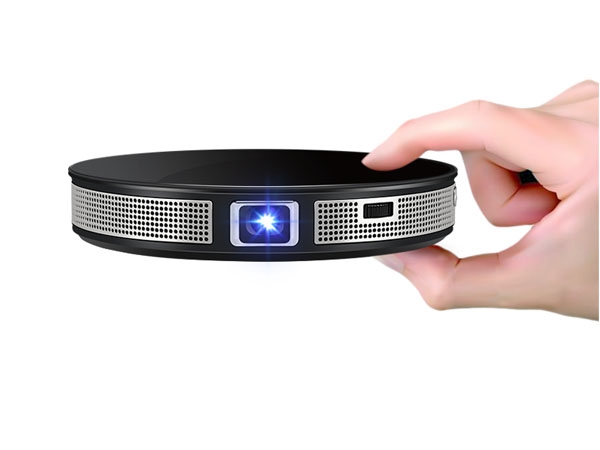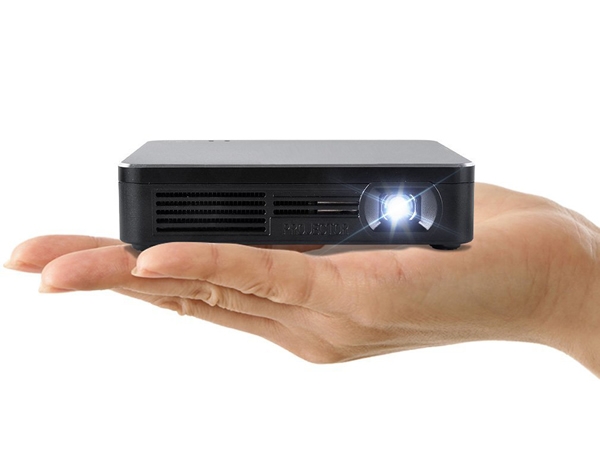6 Things You Should Know About Home Theater Projectors
1. Know the Types of Projectors
There are two types of projectors being made today, the DLP (Digital Light Processing) and the LCD (Liquid Crystal Display). Both of them have different benefits and limitations to consider.
DLP (Digital Light Processing)
DLP projectors use mirrors to project their images. They shine the light onto a chip with microscopic mirrors called the digital micro mirror device. Each mirror is one pixel of the projected image. That light is then reflected off of the mirrors and through the projector lens.
Advantages |
Disadvantages |
|---|---|
|
It produces a smooth image that is as good as 35 or 70 mm film. |
The DLP has a limited number of pixels due to the mirrored chip. |
|
The DLP is highly accurate with no shadows. |
It can produce the rainbow effect with brief flashes of color across the screen. |
|
It can have a high contrast ratio. |
The DLP is not as bright as LCD technology. |
The DLP is the most affordable type and still delivers high quality images.
LCD Projectors
LCD projectors pass light through three LCD panels that are red, blue, or green. During this time, the pixels can either allow light through or be closed off. The combination of open and closed pixels produces a wide range of colors projected as the moving image. LCD is the major technology used in modern projectors.
Advantages of the LCD |
Disadvantages of the LCD |
|---|---|
|
The LCD is very compact. |
LCDs can have dead pixels. |
|
It has high brightness capabilities. |
They can lose image quality over time. |
|
The LCD has good color saturation. |
Color uniformity is lower than the DLP. |
Because of the advanced technology they use, LCDs are more expensive than the DLPs.
2. Know the Aspect Ratios Available
The aspect ratio is the rectangular shape of the video image. A wide-screen TV has a 16:9 ratio, while a standard television has a 4:3 ratio. Each projector or TV is formatted for one or the other, but they all will play programming of any aspect ratio, but it may need to be altered slightly to fit the screen size. Keep in mind that TV programs and DVDs all have their own ratios.
Ratio |
Description |
|---|---|
|
For classic films, regular TV programs, or large IMAX presentations, this ratio will work well. If watching a widescreen film on it, black borders show up on the top and bottom of the screen. Typically the 4:3 ratio has lower resolution and less sharp images. |
|
|
The 16:9 is the choice for most movie enthusiasts because it can deliver a much higher quality image. Blu-ray and HDTV are both designed for a 16:9 system. Unfortunately, when watching an average TV program that is not HDTV, the image appears small. |
Decide which ratio to go with based on the type of videos or programs that to be watched. The 16:9 ratio is most commonly found in projectors, but the 4:3 is also available.
3. Know How Brightness Affects Projectors
The brightness of a projector is measured in ANSI lumens. Typically, projectors have between 800 and 3000 lumens. The human eye will perceive the brightness of the image based on the light output of the projector and the reflectiveness of the screen. More light output is not necessarily a good thing though. The image should be bright enough to be sharp and clear without fatiguing the eyes. The number of lumens to look for depends on the lighting in the room.
Lumens Range |
Recommendation |
|---|---|
|
These projectors are the least expensive, but the low output of light means that they have to be in a dark room. They are best on small or even "mini" screens. |
|
|
1,000 to 2,000 Lumens |
This is a common lumen range and these projectors need to be in dimly lit rooms. This range can handle a small to average-sized screen. |
|
2,000 to 3,000 Lumens |
This range is more flexible with lighting and the projector can be placed in a room with some ambient lighting. This range can handle any size of screen. |
|
Above 3,000 Lumens |
These projectors are the most expensive and are very bright. These should be in rooms with some lighting. If placed in dark rooms, the screen is too bright to look at. |
Selecting the brightness of the projector should be based on the lighting in the existing room as well as the size of the screen. A small screen with a 4:3 ratio is considered to be 43 by 57 inches and a large screen, 87 by 116 inches. A small screen with a 16:9 ratio is considered to be 45 by 80 inches and a large screen, 58 by 104 inches. The larger the screen, the more lumens are needed.
4. Know How Resolution Affects the Picture
The resolution is determined by the number of pixels projected. The higher the resolution, the clearer and sharper the image is. The chart below discusses the main three resolutions found in home theater projectors.
Resolution |
Description |
|---|---|
|
1280x720 |
Projectors with this resolution provide good DVD and Blu-ray video quality at an affordable price. |
|
1280x768 |
These projectors work well with the 16:9 ratio videos and are particularly good with computer resolutions if projecting a computer system onto the screen. |
|
1920x1080 |
This is the best resolution for high definition formats such as HDTV, Blu-ray, and gaming systems. They are more expensive but still affordable for a household. |
For the best results, match the resolution with the type of source material. For example, Blu-ray players, gaming systems, and HDTV signals need higher resolutions.
5. Know the Types of Keystone Correction
A projector with keystone correction features can adjust the image being projected so that it displays flat on the screen. For example, if a projector is angled down at the screen in front of it, the image would naturally be distorted into the shape of a trapezoid instead of a rectangle. Most projectors come with either manual or digital keystone correction. The digital devices can correct the shape of the image before it ever leaves the projector. Manual devices require users to adjust the angle themselves. Either way, a projector needs to have one of these features.
6. Know the Throw Ratio
The throw distance is how far back the projector needs to be placed from the screen in order to produce quality images. It is important to make sure that a projector is capable of being far enough back for a large screen because projectors vary in the distances that they can project. The throw ratio is defined as the distance from the lens to the screen, divided by the width of the screen. For example, if the projector is 10 feet from the wall, and the screen is 5 feet wide, then the throw ratio is 2. So, if looking at a projector that has a throw ratio of 2 and the screen is 7 feet wide, then the projector needs to be capable of projecting the image 14 feet. The throw ratio and the throw distance should be noted within the product specifications. Buyers should select a projector with a throw ratio that works for the room where it will be located.















